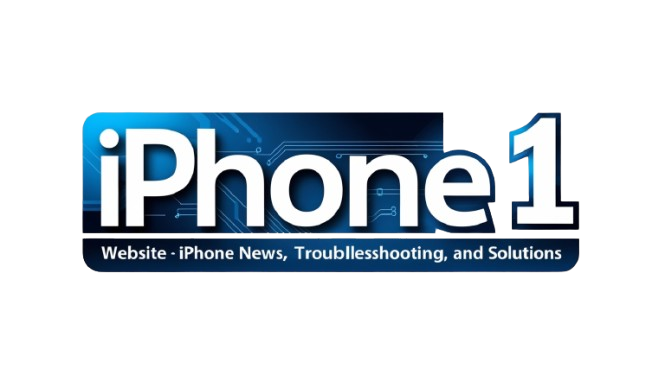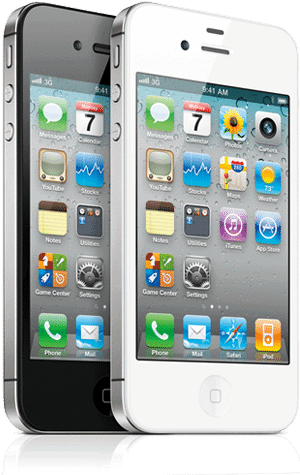Reclaiming Your iPhone 13: A Comprehensive Guide to iCloud Activation Lock Removal
Navigating the iCloud Activation Lock can be a frustrating experience, especially when acquiring a pre-owned iPhone 13 (including mini, Pro, and Pro Max models). This updated guide provides proven solutions to bypass this lock, even without the original owner’s assistance or Apple ID password.
Understanding Your Options: A Quick Overview
Several methods can help you regain access to your locked iPhone 13. These include:
Apple ID Password Reset: If you have access to the associated email account, recovering your password is the simplest solution.
Contacting the Previous Owner: The most straightforward approach is requesting the previous owner to remotely disable Find My iPhone, removing the lock.
DNS Server Bypass: This technique allows you to circumvent the “iPhone Locked to Owner” message, granting limited functionality without fully removing the lock.
Professional Unlocking Services: A reliable unlocking service offers a practical solution when the original owner’s credentials are unavailable.
Third-Party Unlocking Tools: While some tools claim to unlock iCloud, proceed with caution as many are ineffective or fraudulent.
This guide will delve into each of these methods, providing clear instructions and highlighting potential pitfalls.
Acquiring a Used iPhone 13? Navigate the Activation Lock with Ease
Purchasing a pre-owned iPhone 13 requires addressing the iCloud Activation Lock. Contacting the previous owner is crucial. Whether in person or remotely, they can easily remove the lock via their Apple ID account. This is a simple process unless the device was stolen.
The previous owner can remotely disassociate the iPhone 13 from their account by:
- Visiting appleid.apple.com.
- Signing in with their Apple ID.
- Selecting “Devices.”
- Choosing the specific iPhone 13.
- Clicking “Remove from Account.”
Regaining Control of Your Own Device
If you’ve locked yourself out of your iPhone 13, Apple’s official solution involves using your Apple ID and password to disable Find My iPhone. If you’ve forgotten your credentials, utilize Apple’s iForgot service (iforgot.apple.com) for immediate password recovery.
Locating your Apple ID is also possible through:
Checking iCloud or Media & Purchases settings on other Apple devices.
Navigating to System Preferences > Apple ID on a Mac.
Accessing Settings > Apple ID on Apple TV.
Using the iForgot website’s Apple ID lookup feature with your name and email address.
Exploring Free iCloud Unlocking Methods
Free iCloud unlocking is feasible if you possess the correct Apple ID and password. Without these credentials, a DNS bypass offers a limited workaround:
- Power on your iPhone.
- Proceed through setup until reaching “Choose Wi-Fi Network.”
- Tap the “i” icon next to your Wi-Fi network.
- Select “Configure DNS.”
- Choose “Manual” and “Add Server.”
- Enter the closest IP address from this list (updated as of December 2024 – research current DNS servers for accuracy):
North America: [Current IP Address]
South America: [Current IP Address]
Europe: [Current IP Address]
Asia: [Current IP Address]
Australia/Oceania: [Current IP Address]
Africa: [Current IP Address]
- Tap “Back,” select your Wi-Fi network, enter the password, and join.
- Repeatedly press “Back” when the activation screen appears to return to Wi-Fi settings.
- You should now see the iCloudDNSBypass.net screen.
Be wary of free unlocking tools and services; many are scams.
Self-Service iCloud Lock Removal: Proceed with Caution
If contacting the previous owner is impossible, third-party activation lock bypass tools or services exist. However, exercise extreme caution and research thoroughly to avoid scams. Many online tools claiming to bypass iCloud Activation Lock are fraudulent.
Avoid:
Downloadable software tools.
Hackers offering unlocking services.
Online tools claiming to interact directly with Apple servers.
* PDF downloads with unlocking instructions.
Professional iCloud Lock Removal Services: A Reliable Alternative
Reputable iCloud unlocking services offer a viable solution. DirectUnlocks, for example, has proven effective in independent testing. (Research current reputable services for up-to-date information). Their process typically involves providing your device’s IMEI number. (Refer to DirectUnlocks’ website for specific instructions).
Bypassing the iCloud Activation Lock can be complex. This guide provides a roadmap to navigate the process effectively. Remember to prioritize safe and legitimate methods to avoid scams and ensure a successful unlock.
Navigating iPhone Xs/Xs Max Activation Lock: A Comprehensive Guide
Activation Lock, a cornerstone of Apple’s security framework, safeguards your iPhone Xs/Xs Max against unauthorized access. This robust feature, integrated with Find My, requires your Apple ID and password to reactivate the device after a reset or remote wipe. While this protection is invaluable, situations arise where bypassing Activation Lock becomes necessary. This guide explores legitimate avenues for navigating this process, offering updated insights and practical steps.
Officially Removing Activation Lock: The Gold Standard
The most secure and recommended approach involves utilizing Apple’s official methods. This ensures data integrity and avoids potential complications.
Disabling Find My Directly on the Device:
If you have access to the locked iPhone Xs/Xs Max, disabling Find My is straightforward:
- Navigate to Settings.
- Tap your Apple ID at the top.
- Select Find My.
- Toggle off Find My iPhone.
- Enter your Apple ID password to confirm.
Disabling Find My via iCloud.com:
If you don’t have physical access to the device, you can disable Find My remotely:
- Visit iCloud.com on any web browser.
- Log in with your Apple ID and password.
- Click on Find iPhone.
- Select All Devices.
- Choose the locked iPhone Xs/Xs Max.
- Click Erase iPhone.
- After the erase process, click Remove from Account.
Third-Party iCloud Unlock Services: A Viable Alternative
Reputable third-party services like DirectUnlocks offer an alternative solution, particularly useful when you lack access to the device or the Apple ID credentials. These services typically utilize IMEI-based unlocking methods, interacting directly with Apple’s databases.
Using DirectUnlocks:
- Visit the DirectUnlocks website.
- Select your iPhone model (iPhone Xs/Xs Max).
- Enter the IMEI number. (Dial *#06# on any phone to retrieve the IMEI.)
- Verify device details and proceed to checkout.
- Provide a valid email address and agree to the terms and conditions.
- Choose your preferred payment method and complete the transaction.
- You’ll receive an email confirmation within 24-72 hours upon successful unlocking.
Software-Based Solutions: Proceed with Caution
Several software tools claim to bypass Activation Lock. However, these solutions vary significantly in effectiveness and safety. Using unreliable software can potentially damage your device or expose your computer to malware. Thorough research and caution are paramount.
iBypasser: A Closer Look:
iBypasser is a relatively popular software option, offering features like a free trial and a money-back guarantee. However, it requires jailbreaking the device, a process that can void your warranty and introduce security vulnerabilities. Always weigh the risks and benefits before proceeding with such tools. Consult reputable tech sources for up-to-date information on jailbreaking and its implications.
Protecting Your Investment: Proactive Measures
Preventing Activation Lock issues is always preferable. Ensure you record your Apple ID and password in a secure location. Consider using a password manager to simplify credential management. When selling or giving away your iPhone Xs/Xs Max, always remember to sign out of iCloud and erase the device completely to disable Activation Lock.
Conclusion: Choosing the Right Path
Bypassing Activation Lock requires careful consideration. Prioritize official methods whenever possible. If third-party services are necessary, choose reputable providers like DirectUnlocks. Exercise extreme caution with software solutions, understanding the potential risks involved. By staying informed and taking proactive steps, you can navigate Activation Lock challenges effectively and securely.





